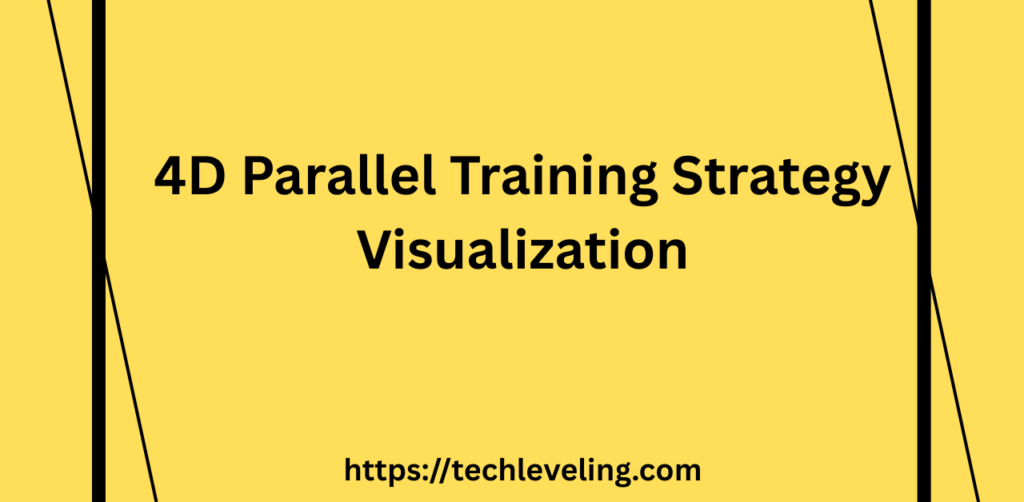A Little Ultimate Guide About Large Language Models to Revolutionize Growth in 2025
Large Language Models (LLMs) are changing how industries automate communication, handle data, and deliver customer experiences. In 2025, the rise of more efficient, lightweight, and powerful LLMs is helping businesses grow faster than ever. This guide walks you through everything—from understanding what LLMs are to how to train, fine-tune, evaluate, and deploy them using modern tools and cloud infrastructure.
What is a Large Language Model (LLM)?

A Large Language Model is an artificial intelligence model trained on massive amounts of text to understand and generate human-like language. These models use transformer-based architectures and contain billions of parameters, allowing them to summarize content, write essays, answer questions, and even write code. In 2025, LLMs have become core components of smart applications and digital assistants.
Tools Used to Build and Deploy LLMs
To build and manage LLMs effectively, developers rely on specialized tools that streamline training, experimentation, deployment, and monitoring.
- Hugging Face Transformers: A library offering pre-trained models and tokenizers, widely used for NLP tasks and fine-tuning.
- PyTorch & TensorFlow: Deep learning frameworks used to design and train neural networks, including LLMs.
- DeepSpeed & Megatron-LM: Libraries designed to enable large-scale training with memory optimization and parallelism.
- Weights & Biases (W&B): A tool to track and visualize experiments, monitor metrics, and share results with teams.
- Nanotron: A lightweight, flexible training tool optimized for 4D parallelism, making large-scale training accessible.
- LightEval: A performance evaluation tool that tests LLMs across multiple benchmarks to check quality and robustness.
Techniques to Train LLMs for Good Performance
Training LLMs is a complex process that involves balancing data, architecture, hardware, and optimization techniques.
- Curriculum Learning: Models are trained in stages, starting with simple examples and progressing to more complex ones, improving stability and learning speed.
- Masked Language Modeling (MLM): Trains the model to predict missing words in a sentence, enhancing its understanding of context.
- Causal Language Modeling (CLM): Focuses on predicting the next word in a sequence, which is critical for tasks like story generation or chatbot responses.
- Gradient Checkpointing: Reduces GPU memory usage during training by storing fewer intermediate results, which is useful for training large models.
- Mixed Precision Training: Uses lower precision (like FP16 instead of FP32) to speed up training while maintaining accuracy and reducing hardware costs.
- Adaptive Optimizers (like AdamW): These help models converge faster by adjusting learning rates based on data patterns, improving training efficiency.
Finding Common Problems in LLM Training
Understanding the challenges in LLM development helps teams build better and safer models.
- Data Imbalance: When certain topics dominate the dataset, the model may become biased or underperform in less-represented areas.
- Catastrophic Forgetting: The model may forget previously learned knowledge during continued training or fine-tuning.
- Overfitting: If the model memorizes training data instead of generalizing, it will perform poorly on unseen tasks.
- Slow Convergence: Training large models can take weeks or months, especially without parallel optimization.
- Hardware Failures: Memory crashes, overheating, or GPU bottlenecks can cause delays or require restarting training from scratch.
Preparing Solutions and Evaluating Web-Scale Data

To fix these problems, modern techniques and tools help clean, organize, and assess large datasets before training.
- Data Deduplication: Duplicate or low-quality data is removed to prevent the model from overfitting or producing repetitive outputs.
- Reinforcement Learning with Human Feedback (RLHF): Involves human evaluations to teach the model how to respond more accurately and naturally.
- Web-Scale Filtering: AI-powered tools are used to clean massive datasets collected from the web, removing offensive or irrelevant content.
- Validation Datasets: Specially curated datasets are used during training to evaluate performance across tasks like reasoning, translation, or summarization.
- Active Learning: Continuously feeds the model new examples it struggles with, allowing it to improve over time through feedback loops.
LLM Parallelism and Efficient Training Strategies

Parallelism is the key to scaling LLM training on multiple GPUs or compute nodes, enabling faster and more cost-effective learning.
- Data Parallelism: The training dataset is divided among GPUs, and each processes a different batch of data.
- Model Parallelism: The model’s layers or parameters are split across GPUs, allowing larger models to be trained.
- Pipeline Parallelism: Layers are assigned to different GPUs in a sequence, so the training flows like a pipeline.
- Tensor Parallelism: Each tensor is broken into smaller pieces and processed in parallel, allowing efficient GPU utilization.
- 4D Parallelism: Combines all of the above strategies for maximum scalability, speed, and performance in large-scale LLM training.
Fine-Tuning LLMs for Specific Tasks

Fine-tuning allows pre-trained models to adapt to specific domains, making them smarter and more useful in real-world applications.
- Domain Adaptation: Refines a general model to understand specialized vocabularies like legal, medical, or financial terms.
- Instruction Tuning: Teaches the model to follow commands or prompts by training it on examples of instructions and expected responses.
- LoRA (Low-Rank Adaptation): A technique that fine-tunes models with fewer parameters, saving time and memory.
- Adapters & Prefix Tuning: Adds small learnable layers or prompts on top of the existing model, enabling task-specific learning without changing the entire model.
Aligning LLMs for Safe and Ethical Behavior
Alignment ensures that models behave as intended and do not produce harmful or biased responses.
- Human Feedback Loops: Models are refined using ratings or reviews from human evaluators to improve their quality and reliability.
- Guardrails: Predefined rules and filters block unsafe, offensive, or misleading content during inference.
- Bias Mitigation: Techniques like reweighting, adversarial training, or counterfactual examples are used to remove bias from model outputs.
- Explainability Tools: Visual tools such as SHAP and LIME show which parts of the input influenced the model’s response, adding transparency.
Fast Inference for Real-Time Applications
To use LLMs in real-time services (like chatbots or search engines), they must generate responses quickly and efficiently.
- Quantization: Reduces the size of model weights by converting them into lower-precision formats, improving speed without significant accuracy loss.
- Distillation: A smaller “student” model learns from a larger “teacher” model, allowing faster inference while retaining performance.
- Caching: Reuses previously computed results, especially for repeated inputs, speeding up subsequent queries.
- Streaming Inference: Allows partial generation while still receiving input, useful for voice assistants or real-time translators.
Nanotron: Lightweight 4D Parallelism for Efficient LLM Training
Nanotron is a powerful yet lightweight tool designed to simplify LLM training using full 4D parallelism. It reduces training time, hardware cost, and memory requirements by efficiently splitting data, models, and computations across multiple GPUs. Ideal for research labs and startups, Nanotron supports various LLM architectures like LLaMA and Mistral with minimal configuration.
LightEval: Fast Parallel Evaluation for LLMs
LightEval makes it easier to evaluate models across different tasks such as classification, reasoning, and summarization. It supports simultaneous testing on multiple datasets using parallel processing, enabling fast and scalable performance analysis. In 2025, it’s a go-to tool for benchmarking open-source and proprietary LLMs during development.
Common LLM Training Challenges and Solutions
| Problem | Description | Solution |
|---|---|---|
| Data Imbalance | Certain topics dominate, leading to skewed performance | Curate diverse datasets, apply weighting |
| Overfitting | Model memorizes training data, fails on new inputs | Use regularization, dropout, or early stopping |
| Slow Convergence | Training takes too long, consuming excessive compute resources | Use mixed-precision training, better optimizers like AdamW |
| Hardware Bottlenecks | Limited GPU/TPU memory, crashes or slowdowns | Use gradient checkpointing, tensor parallelism |
| Lack of Generalization | Model performs well on one task but fails in others | Apply instruction tuning, LoRA, and multi-task learning |
Choosing the Best Cloud Platform for LLM Projects
The right cloud platform can dramatically impact your cost, scalability, and speed when working with LLMs. Here’s a comparison of the top options:
| Cloud Provider | Best For | Key Features |
|---|---|---|
| Google Cloud (TPUs) | AI innovation & scalability | TPU v5e, Vertex AI, easy deployment |
| AWS (SageMaker) | Versatile industries | Trainium chips, scalable storage, enterprise support |
| Azure ML | Enterprise applications | Seamless OpenAI integration, DevOps support |
| CoreWeave | Cost-effective GPU power | Optimized for deep learning, affordable GPU clusters |
| Lambda Labs | Customizable setups | Bare-metal GPUs, Docker support, easy monitoring |
Choose based on your project size, budget, and need for automation or flexibility.
🔍 Frequently Asked Questions (FAQs)
What is the difference between pre-training and fine-tuning in LLMs?
Pre-training involves training the model on a massive general dataset to learn language patterns and logic. Fine-tuning is a later step where the model is adapted to specific tasks or domains using smaller, specialized datasets.
Why is 4D parallelism important for large-scale LLM training?
4D parallelism combines data, model, pipeline, and tensor parallelism. It allows massive LLMs to be trained efficiently across multiple GPUs or nodes, significantly reducing training time and resource requirements.
How can I prevent bias in my language model?
You can reduce bias by using a diverse dataset, applying bias-mitigation algorithms, involving human-in-the-loop evaluations, and regularly testing outputs for fairness across different demographics.
Can small teams or startups work with LLMs effectively in 2025?
Yes. With tools like Nanotron, LightEval, and LoRA, even small teams can train, evaluate, and deploy LLMs on a budget. Cloud credits and lightweight architectures make entry barriers lower than ever.
Which evaluation benchmarks should I use to test my LLM?
Popular benchmarks include MMLU for reasoning, HellaSwag for commonsense, TruthfulQA for factual accuracy, and BIG-bench for multi-task performance. These help assess your model’s quality and domain adaptability.
Final Thoughts: LLMs Are Driving the AI Boom in 2025
Large language models are no longer just tools—they are the foundation for future-ready digital products and services. From training and fine-tuning to deployment and evaluation, understanding the full LLM lifecycle will empower individuals, developers, and organizations to lead in the AI-first world. With tools like Nanotron, LightEval, and adaptive training methods, even small teams can harness the power of LLMs to innovate, scale, and grow.

